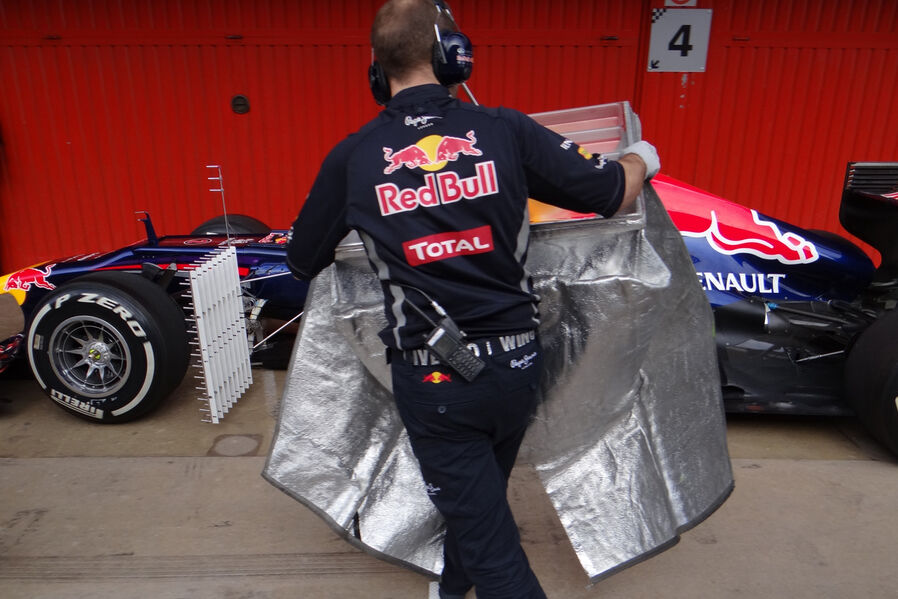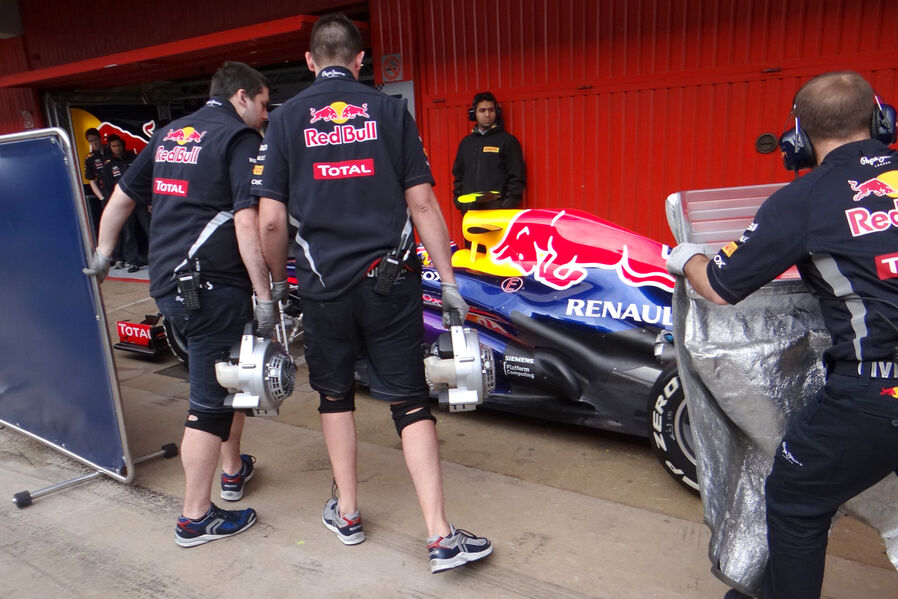The following is an excerpt from Mark Hughes' MPH column in the 28 February edition of Autosport:
Ross Brawn, who said: “Maybe their exhaust solution [regarding rear-bodywork design] was based on the idea that there would be more leeway with the mapping. [The Renault-engined] Red Bull’s and Lotus’s solution is problematic off-throttle, because in off-throttle mode there is less blowing from the exhaust and therefore less downforce contribution by the exhaust, which means that one has to rely more on the Coke bottle [profile of the rear bodywork]. But the Coke bottle on the Red Bull and Lotus is less pronounced because of their ramp behind the tailpipe. Therefore, their solution is inferior at corner entry compared to the solution pioneered by McLaren, and which all the teams except Red Bull and Lotus followed. It’s possible that they wanted to compensate with clever engine mapping.”
The design choice of exhaust layout is essentially whether or not to compromise the extent of the Coke bottle-style cut-in of the rear lower bodywork by partially blocking it with an exhaust-exit ramp that allows you to target the exhaust flow over the downforce- producing components to better effect. You can either have a McLaren-style sharply-defined Coke-bottle section that enhances the speed of the airflow along the flanks and over the brake ducts and diffuser top, but with compromised exhaust-enhanced downforce. Or you can go the Red Bull route and have ideal exhaust positioning at the cost of compromised airflow from the Coke-bottle section. This would be expected to give you superior downforce to the McLaren layout on-throttle but less off-throttle.
It pretty much tallies with what I thought. The ramp/tunnel solution provides a more pronounced exhaust effect, as the exhaust is isolated from any possibility of external interference. But of course given the increased obstruction to the path of other airflow there would be more drag thanks to the boundary layers, and also a less powerful effect from all other airflows (other than the exhaust-derived airflow). As I posted early on in another thread:
http://www.f1technical.net/forum/viewto ... =6&t=14500
raymondu999 wrote:I think the difference really just stems from there. The Red Bull style, I would think, has a much stronger exhaust effect as the effect is shielded from any other flows, but at the cost of added drag, as obviously there will be additional boundary layers and additional choking issues to contend with.
IMO the reason why more people went McLaren is that it was easier to set up - but at the cost that the exhaust effect would be less, as the exhaust direction will be much more affected by other flows of air.
Regarding helping them regain the coke-bottle efficiency, it's an interesting problem - one that in my opinion Lotus and Red Bull have tackled in completely diverging solutions. The Lotus ramp terminates all the way near the diffuser - I think they're trying to completely scavenge whatever airflow they can into their tunnel, so that it "replaces" their original coke bottle, to help them with off-throttle downforce. The Red Bull, however - has terminated its exhaust ramp earlier. IMO this basically is so that the air can flow more "naturally" around the ramp itself as well. If you looked at the car from an aerial shot, it does look like there is a coke bottle shape forming behind the entire ramp/tunnel on the RB9 - so that when the exhaust gas isn't there, the air goes back into a more natural coke bottle. A "secondary" coke bottle, if you will.












